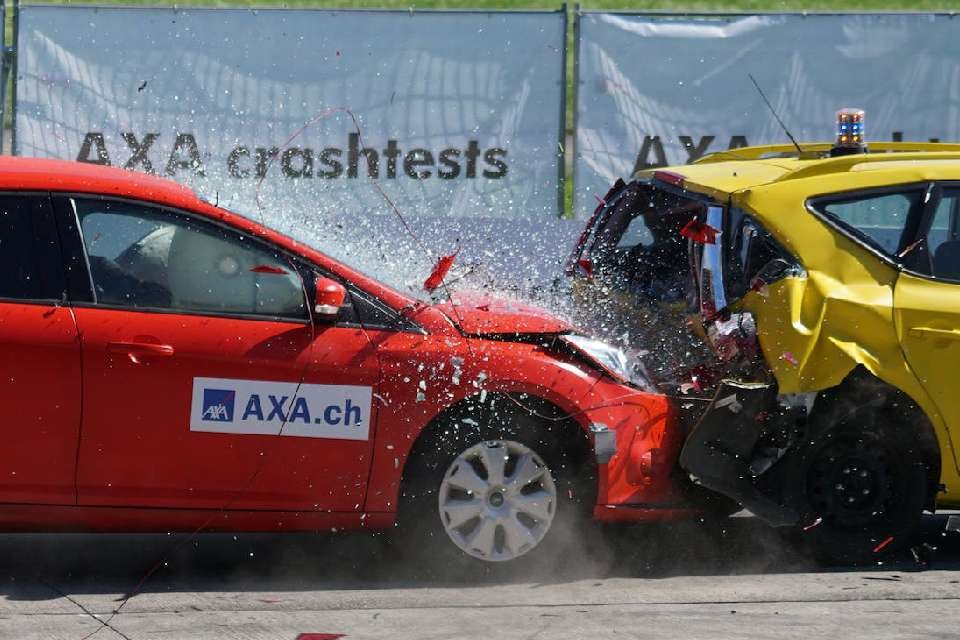NTSB calls for alcohol detection systems for new vehicles. Awful accident features need for innovation answers for kill weakened driving and speeding. On Sept. 20, 2022, Washington DC — An examination concerning a California crash that killed nine – including seven kids – has driven the Public Transportation Security Board to call for liquor hindrance location frameworks to be remembered for all new vehicles, as per new proposals delivered Tuesday.

The accident, on New Year’s Day 2021 in Avenal, California, was brought about by a disabled driver who was speeding, the NTSB found.
“Innovation might have forestalled this appalling accident — similarly as it can forestall the huge number of fatalities from disabled driving and speeding-related crashes we find in the U.S. every year,” said NTSB Seat Jennifer Homendy. “We really want to carry out the advances we have on the spot to save lives.”
Because of the examination, the NTSB is suggesting measures utilizing new in-vehicle advances that can restrict or disallow weakened drivers from working their vehicles as well as advances to forestall speeding. These include:
- Requiring latent vehicle-incorporated liquor disability recognition frameworks, high level driver observing frameworks or a mix of the two that would be equipped for forestalling or restricting vehicle activity in the event that it identifies driver debilitation by liquor. The NTSB suggests that the Public Roadway Traffic Well–being Organization require all new vehicles to be furnished with such frameworks.
- Boosting vehicle makers and purchasers to embrace savvy speed transformation frameworks that would forestall speed-related crashes. This is an emphasis of a past NTSB proposal to NHTSA.
“We need to recall that innovation is just essential for the arrangement. To save lives on our streets, we really want to look all the more extensively at the whole transportation framework, which incorporates all that can forestall an accident,” said Homendy, a solid ally of the complete Safe Framework Way to deal with diminishing street passing’s.
On Friday, Jan. 1, 2021, a game utility vehicle was voyaging south on State Highway 33 close to Avenal, Calif. In the mean time, a pickup truck — involved by a driver and seven travelers, going in age from 6 to 15 years of age — was voyaging north on State Highway 33.
The SUV had voyaged under 3,000 feet on SR-33, during which it advanced to a speed somewhere in the range of 88 and 98 mph, when it ran off the shoulder to one side. The driver over-corrected to one side and the SUV crossed the center-line into the other path, straightforwardly before the approaching pickup truck. The SUV and pickup truck impacted head-on and the truck promptly burst into flames. The SUV driver and every one of the eight pickup truck inhabitants passed on.
NTSB examiners found that the SUV driver had an elevated degree of liquor inebriation and was working at an over the top speed. These variables added to a deficiency of vehicle control. The extreme speed of the SUV likewise forestalled the approaching pickup truck from having sufficient opportunity to make an equivocal move. The NTSB verified that it is impossible this crash was survivable because of the seriousness of the head-on impact, the critical vehicle interruption and the quick spread of the post-crash fire.
Driving affected by liquor stays a main source of injury-involved parkway crashes. Starting around 2000, in excess of 230,000 individuals have lost their lives in crashes including liquor hindered drivers as per NHTSA. In 2020, an expected 11,654 fatalities happened in liquor weakened crashes. This number addressed around 30% of all traffic fatalities that year and a 14% increment over the 10,196 people who kicked the bucket as a result of liquor hindered crashes in 2019.
Speeding is likewise an issue that exploration proposes is declining. In 2020, there were 11,258 fatalities in crashes in which somewhere around one driver was speeding, as per NHTSA. Speeding increments both the possibilities being engaged with an accident and the seriousness of crash wounds.
The issues of debilitated driving and unnecessary speeding are both on the NTSB’s Most Needed Rundown of Transportation Well-being Upgrades. To forestall liquor and other medication disabled driving accidents, the NTSB has called for in-vehicle liquor discovery innovation, the bringing down of the blood liquor fixation breaking point to .05 g/dL or lower, liquor start interlock gadgets for individuals sentenced for driving while inebriated and suggested that controllers foster a norm of training to further develop drug toxicology testing.
The NTSB has additionally required a thorough technique to dispose of speeding-related crashes that consolidates conventional measures like implementation and guideline with new mechanical advances like speed limiters and clever speed transformation innovation.
Prevent alcohol, and other Drug-Impaired Driving:
Driving affected by liquor and other drugs remains a main source of expressway crashes. In 2019, one of every four traffic fatalities came about because of accidents including liquor impeded drivers.
Furthermore, a considerable lot of these hindered driving accidents include drivers who both beverage and utilize different medications (legitimate, unlawful, and over the counter). Convoluting matters, every year, more states are passing regulations permitting the utilization of sporting weed and cannabis for restorative use.
Disabled driving is 100 percent preventable. We know an as such blood liquor content (BAC) of .08 g/dl is excessively high. States need to bring down as such BACs to .05%, a move just Utah has initiated. An excessive number of liquor impeded crashes have happened including drivers who had recently been indicted for tipsy driving. All states need to execute regulations requiring all drivers sentenced for liquor hindered heading to utilize an interlock gadget, forestalling future disabled driving.
We have researched many accidents including drug-impeded drivers, yet the truth of the matter is we don’t actually have the foggiest idea how broad the medication debilitated driving issue is on the grounds that, not at all like for liquor, no normalized drug-testing conventions exist. There is no settled breaking point or limit to decide other medication debilitation.
Furthermore, assessing the effect of different medications on drivers is testing in light of the fact that many medications weaken people uniquely in contrast to liquor. Primary concern: we really want to foster better medication testing systems and tests.
Stats to know:
10,142: Passing’s in engine vehicle crashes including drivers with BACs of .08% or higher in 2019-(28% of all traffic fatalities for the year)- (Source: NHTSA)
20%: Reviewed drivers testing positive for something like one hindering medication (Source: 2013-2014 Public Side of the road Study of Medication Use by Drivers)
1,038: Youngsters who kicked the bucket in crashes including a hindered driver in 2018 (Source: NHTSA)
Conclusion and recommended actions:
Tending to and forestalling hindered driving requires a three-pronged methodology that includes regulation, innovation, and testing.
Regulators should:
Distinguish best practices and science-based countermeasures to forestall drug-disabled driving; foster a norm of training for drug toxicology testing and further developing side of the road oral-liquid evaluating gadgets for better location of medication hindered drivers; and finish improvement of in-vehicle liquor identification innovation.
States should:
Institute regulations to require the utilization of liquor start interlock gadgets for all people indicted for driving while inebriated offenses; and lay out as such BAC cutoff of .05 or lower for all drivers.
Drivers should:
NOT drive impaired; it’s just straightforward. Indeed, even one beverage or one portion can make you hindered.


